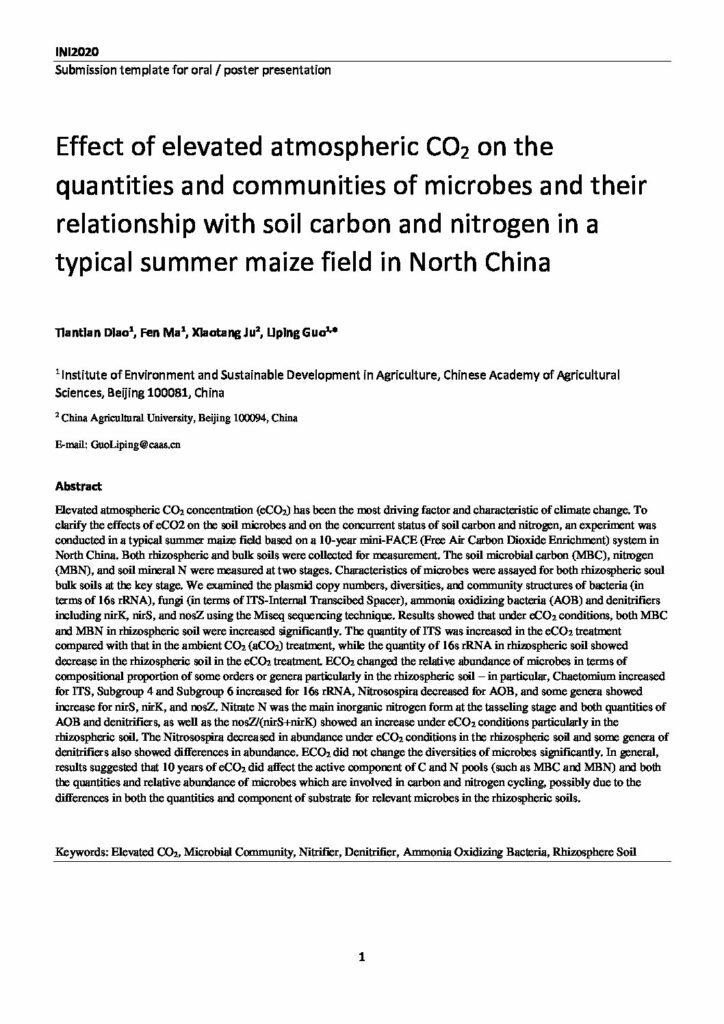Effect of elevated atmospheric CO2 on the quantities and communities of microbes

Elevated atmospheric CO2 concentration (eCO2) has been the most driving factor and characteristic of climate change. To clarify the effects of eCO2 on the soil microbes and on the concurrent status of soil carbon and nitrogen, an experiment was conducted in a typical summer maize field based on a 10-year mini-FACE (Free Air Carbon Dioxide Enrichment) system in North China. Both rhizospheric and bulk soils were collected for measurement. The soil microbial carbon (MBC), nitrogen (MBN), and soil mineral N were measured at two stages.
Characteristics of microbes were assayed for both rhizospheric soul bulk soils at the key stage. We examined the plasmid copy numbers, diversities, and community structures of bacteria (in terms of 16s rRNA), fungi (in terms of ITS-Internal Transcibed Spacer), ammonia oxidizing bacteria (AOB) and denitrifiers including nirK, nirS, and nosZ using the Miseq sequencing technique. Results showed that under eCO2 conditions, both MBC and MBN in rhizospheric soil were increased significantly. The quantity of ITS was increased in the eCO2 treatment compared with that in the ambient CO2 (aCO2) treatment, while the quantity of 16s rRNA in rhizospheric soil showed decrease in the rhizospheric soil in the eCO2 treatment. ECO2 changed the relative abundance of microbes in terms of compositional proportion of some orders or genera particularly in the rhizospheric soil – in particular, Chaetomium increased for ITS, Subgroup 4 and Subgroup 6 increased for 16s rRNA, Nitrosospira decreased for AOB, and some genera showed increase for nirS, nirK, and nosZ.
